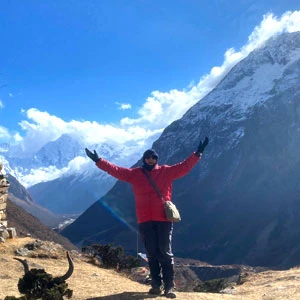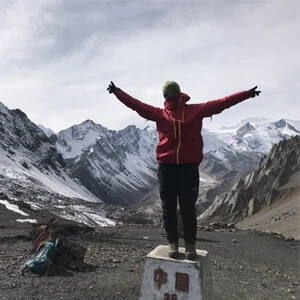Upper Dolpo Trek Overview
The Upper Dolpo Trek courses through a mystical land of Buddhist monasteries and a Tibetan culture largely untouched by the world outside the region's borders. A hike to the area presents a considerable logistical exercise in light of the almost non-existent infrastructure for dealing with trekking parties, but the benefits of such splendid isolation are many for the intrepid visitor willing to deal with the route's numerous challenges.
The austere landscapes and villages strike a unique chord of rustic authenticity that speaks to a timelessness enveloping Dolpo like a protective blanket, with ancient Buddhist and Bon Po traditions delicately interwoven with shamanistic influences to create a local culture unlike any other in Nepal. To journey through the region is to be touched by experiences and sights that will live long in the memory of the few who are fortunate enough to pass through the area.
The Upper Dolpo Region Trek to Shey Gompa encompasses an extraordinary journey to one of the most rugged and remote parts of the country, with landscapes that hark to the sparse Tibetan plateau to the north. Built in 1655 and situated at the base of the sacred Crystal Mountain (also known as Ribo Drugta), the monastery of Shey Gompa constitutes a pilgrimage site of some significance to the people of western Nepal. En route, the trail leads through some of the most consistently high trekking territory to be found, with three passes stretching up over 5000 meters in height Nagdalo La (5350m), Shey La (5010m), and Jeng La (5220m)—together with long stretches lingering at altitudes over 4000 meters, guaranteeing many a cold night during the trek. Such challenges of environment and terrain are made for the hardy trekker willing to meet them head-on in the full knowledge that the ultimate and highly unique rewards on offer far outweigh the considerable effort.
If that isn't enough, the Upper Dolpo also offers another of Nepal's crown jewels, Shey Phoksundo National Park, and the spectacularly beautiful Phoksundo Lake, a serene body of water ringed by precipitous mountains and forests that are home to some of the Himalaya's rarest animal species, including the fabled snow leopard.
Upper Dolpo Adventure Trek Difficulty
The trek to the Upper Dolpo region is a challenging journey comprising rugged and remote terrain with trails that pass through steep ascents, rocky paths, and high mountain passes like the Kang La (5,360 meters) and Saldang La (5,200 meters). These high-altitude crossings are not only physically exhausting but also test trekkers with thinning air and potential altitude sickness. Likewise, this trek demands long trekking days of up to 8 hours on uneven, narrow, and exposed trails.
On the other hand, isolation and limited infrastructure also add to its difficulty. Accommodations are sparse, with many sections requiring camping, which adds logistical complexity. Moving on, weather conditions can be unpredictable, especially in high passes, where snow and strong winds can make navigation even more difficult.
Best Time To Trek Upper Dolpo Region
To make this adventure to the Upper Dolpo region successful and enjoyable, it is essential to choose the favorable season. The ideal trekking seasons that we recommend for this journey are Spring (March to May) and Autumn (September to November).
Autumn is arguably the best time to embark on the Upper Dolpo RegionTrek as it offers stable weather conditions, crisp air, and moderate temperature. Often the temperature during this season is cool and comfortable offering favorable trekking conditions. Usually, the daytime temperature during this season ranges from 5°C to 10°C at the most. Likewise, the nighttime temperature ranges from 0°C to 5°C at lower elevations but it may be around 0°C to -15°C at higher altitude levels.
Additionally, the Autumn season adds a vibrant cultural experience to the atmosphere with the festive mood, providing you an opportunity to witness the greatest festival of Nepal, Dashain and Tihar. In the meantime, the skies are clear offering breathtaking views of the snow-clad peaks and the landscapes.
Spring, from March to May is another peak season for Upper Dolpo Circuit Trek. This particular season brings the best beauty to the landscapes with lush greenery and blooming seasonal wildflowers on otherwise arid terrain. Furthermore, the temperature is moderate with clear skies and relatively predictable weather. Typically, the daytime temperature during this season ranges from 10°C to 15°C. Likewise, the nighttime temperature ranges from 0°C to -5°C at lower elevations but it may be around 0°C to -10°C at higher altitude levels.
Interestingly enough, the Upper Dolpo Circuit Trek is also doable during the Monsoon / Summer season as this trail falls under the rain shadow area of the Dhaulagiri ranges. Indeed, the temperature is ideal and unlike other trails of Nepal, it is relatively dry.
One of the major highlight points of the trek during the Monsoon season will be the Yarshagumba collection by the locals. Generally, the daytime temperature during this season ranges from 8°C to 12°C. Likewise, the nighttime temperature ranges from 5°C to 10°C at lower elevations but it may be around 5°C to 8°C at higher altitude levels.
Now, as we speak of the Winter season, the story is entirely different. Due to the combination of harsh weather, dangerously low temperatures at campsites, and heavy snowfall leading to blocked paths, we do not recommend trekking to Upper Dolpo Region to anyone during this season.
Indeed, these challenges make navigation next to impossible, and since this trekking route takes you to high-altitude passes, the path might be entirely closed. During Winter, the daytime temperature ranges from -5°C to -10°C. Likewise, the nighttime temperature ranges from -5°C to -10°C at lower elevations but it may be around -15°C to -20°C at higher altitude levels.
Overall, if you have been planning for the Upper Dolpo Trek, organize your itinerary during the Spring or Autumn season for the best experience.
Upper Dolpo Region Trekking Permit Cost
Upper Dolpo is a restricted area where the required permits can be obtained with a minimum of two trekkers. The relatively high permit fee limits the number of trekkers in the area and thus contributes to Upper Dolpo's preeminence as one of Nepal's most exclusive and memorable experiences. Trekkers need three different trekking permits for the Upper Dolpo Trek, such as:
- Lower Dolpo Special Trekking Permit: It costs 20 dollars per week and 5 dollars per additional day thereafter per person.
- Upper Dolpo Special Trekking Permit: It costs 500 dollars for a minimum of 10 days and 50 dollars per additional day per person.
- Shey Phoksundo National Park entry permit: It costs 3000 rupees (23 dollars) per person.
Booking And Payment With Nepal Trekking Experts
To confirm your journey with us, please send us an email with a copy of your passport, a passport-size photo, and travel details (if available), as well as a 10% deposit using our online payment gateway. The balance of the payment can be paid when you arrive. Please contact our local specialists now for additional information.
In addition, you can also check out our Upper Mustang Trek, Manaslu Circuit Trek, Tsum Valley Manaslu Circuit Trek, Nar Phu Valley Trek, etc.




 based on 2 reviews
based on 2 reviews


